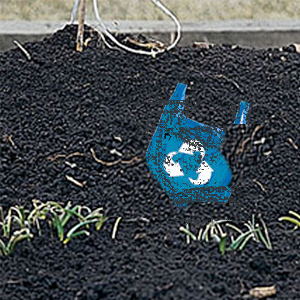Bio-Degradable Plastics

Today, public concern regarding the setting, climate amendment and restricted fossil fuel resources are necessary drivers for governments, firms and scientists to seek out alternatives to crude oil. Bio-based plastics might provide necessary contributions by reducing the dependence on fossil fuels and also the connected environmental impacts. Within the past few decades, several new polymers from renewable feed stocks were developed. As an example, starch, i.e. a naturally occurring polymer, was rediscovered as plastic material. Alternative examples are PLA which will be created via lactic acid from fermentable sugar and PHAs which might be created from vegetable oil next to alternative bio-based feed stocks. Recent developments in rising bio-based plastics are spectacular from a technological purpose of read. Many earlier processes are revisited, like dehydration of ethanol chemically that results in ethylene which is a crucial intermediate chemical which might be subsequently converted into polyvinyl chloride (PVC), polyethylene (PE) and alternative plastics. Moreover, recent technology breakthroughs substantially improved the properties like heat-resistance of PLA, bio-based plastics, enabling a wide array of applications. For varied kinds of plastics, first-of-its kind industrial plants were recently discovered and also the optimization of those plants is ongoing.
Some of the plant capacities are still rather tiny when put next to petrochemical plants (capacity of Tainan’s PHA plant is only two kt); however others are very sizeable (Dow-Crystalsev’s bio based PE plant is to possess capability of 350,000 tons). With growing demand for bio-based plastics, it's in probable simply as a matter of your time till turnkey plants with giant capacities will be commercially available for more bio-based plastics, which allows accelerated growth which is substantial. This study estimates the worldwide capability of emerging bio-based plastics at 0.36Mn tons by the top of 2007. This can be approximately 0.3% of the worldwide production of all plastics (dominated by petrochemical plastics). This production capability of bio-based plastics is even smaller compared to “conventional bio-products”: they represent only two hundredth of the worldwide production of established bio-polymers (20 tons; comprising cellulose polymers, alkyd resins and non-food starch while not starch for fuel ethanol) and only 0.1% of the world paper and board production. The market of emerging bio-based plastics has been experiencing speedy growth. From 2003 to end of 2007, the worldwide average annual growth rate was thirty eighth. In Europe, the annual growth rate was as high as 48th within the same amount.
The total maximum technical substitution potential of bio-based polymers replacing their petrochemical counterparts is estimated at 270 tons, or ninetieth of the overall polymers (including fibres) that were consumed in 2007 worldwide. It’ll not be doable to use this technical substitution potential within the short to medium term. The most reasons are economic barriers (especially production prices and capital availability), the short-term availability of bio-based feed stocks, technical challenges in scale-up and therefore the need for the plastics conversion sector to adapt to new plastics. Nevertheless, this exercise shows that, from a technical point of read, there are very massive opportunities for the replacement of petrochemical by bio-based plastics. The worldwide capability of bio-based plastics, per company announcements, can increase from 0.36 tons in a pair of007 to 2.33 tons in 2013 and to 3.45 tons in 2020. This often adores average annual growth rates of 37th between 2007 and 2013 and 6 June 1944 between 2013 and 2020. In 2007, the foremost necessary merchandise in terms of production volumes was starch plastics (0.15 tons) and PLA (0.15 tons). Based on the company announcements it's projected that the foremost necessary representatives by 2020 are starch plastics (1.3 tons), PLA (0.8 tons), bio-based PE (0.6 tons) and PHA (0.4 tons). Today, the combined volume of these non-food and non plastics applications of starch and man-made cellulose fibres is fifty five times larger than the overall of all new bio-based polymers (approx. twenty tons versus approx. 0.35 tons in 2007). The new bio-based polymers might reach this level in 20-30 years from now. the employment of starch for paper production only amounts to a pair of.6 tons and is hence still six times larger than today’s worldwide production of bio-based plastics. This demonstrates that the assembly of bio-based merchandise at very massive scale isn't unprecedented.
First-in-kind production of bio-based plastics in large industrial plants ought to be seen as a large-scale experimental part during which the strengths and weaknesses of the assorted biobased plastics and their production routes become apparent. The expertise gained must then be taken under consideration when the assembly reaches the steep part of the S-curve. It’ll hence take more than 20 years from now until meaningful edges like CO2 emission reduction are achieved at the macro level. On the opposite hand, the benefits of slow substitution of petrochemical plastics are that technological lock-in may be more easily avoided and that an optimized portfolio of processes may be implemented, guaranteeing most environmental edges at lowest potential prices and minimum social backlash. Many factors clearly speak for bio-based plastics. These are: the limited and therefore unsure offer with fossil fuels (especially oil and gas), the connected economic aspects, environmental concerns (especially savings of non-renewable energy and greenhouse gas abatement), innovation giving new opportunities (employment & technical etc.), rejuvenation in all steps from chemical analysis to the final product and waste management. Challenges that require to be successfully addressed within the next years and decades are the lower material performance of some bio-based polymers, their comparatively high cost for production and processing and also the need to minimize agricultural land use and forests, thereby also avoiding competition with food production and adverse effects on biodiversity and alternative environmental impacts.



